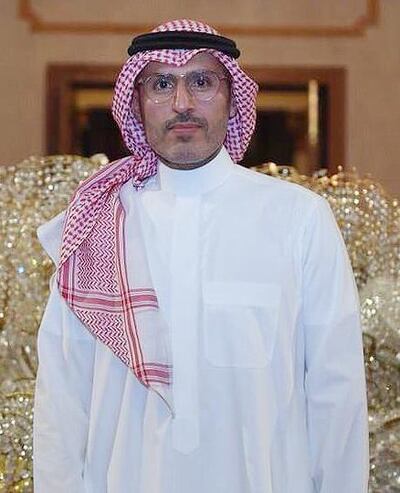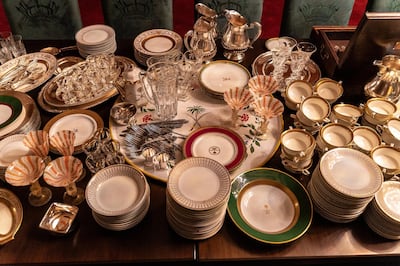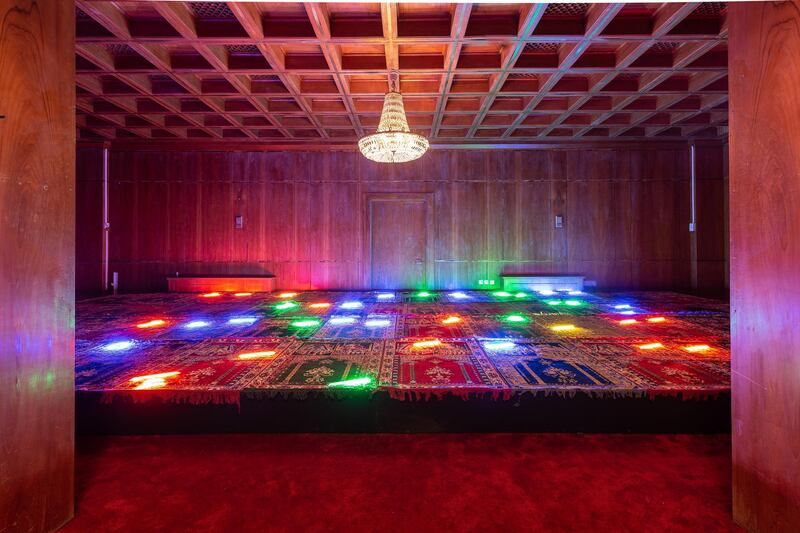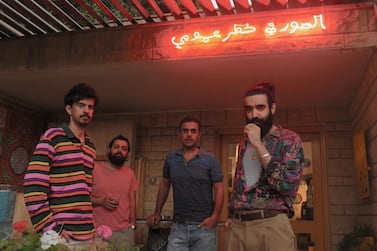Prince Sultan bin Fahad bin Nasser has a knack of coaxing histories out of found objects, and his latest show is a testament to this skill. Using material found throughout Riyadh's formerly abandoned Red Palace and at flea markets throughout the country, Prince Sultan, and the show's curator, Reem Fadda, who lives in Abu Dhabi, have erected a history of Saudi Arabia told through its forgotten goods.
“I always wonder why we neglect things that meant a lot,” he says. “You go to a palace and see a window. You spent money to make this window happen. And then you let go of it. You throw it away. I might as well make use of it.”
Prince Sultan says you can find him on Fridays scouring flea markets in his old Toyota Land Cruiser, using bargaining techniques he learnt from his mother. "When I was young, I was shy, but she made me try it," he says. "They ask for 1,000 and she'd say: 'I'll take it for 100.'"

It was at the Friday markets that he found the material for the centrepiece of his exhibition at the Red Palace in Riyadh. The palace had been abandoned for 20 years and has never before been open to the public in its 75-year history. Now, in Prince Sultan's eponymous exhibition, it has come alive.
The central element is a recreation of the kind of banquet that would have been held in the grounds in the 1940s, but thrown for the labourers, rather than royalty. He researched the type of flowers that would have been used and the food that would have been served. At flea markets, he hunted down the crockery with the insignia of the Red Palace.
He could not find the staff who would have been alive then, so he used a casting agent to hire actors, and asked them to perform getting ready for a banquet and then eating it – the latter in a video that was projected in the palace’s former dining room.
Prince Sultan’s use of the Red Palace is significant in other ways as well.
"I think it's amazing to have the opportunity for the youth," says Prince Sultan about the current Saudi cultural reforms. Aware of his standing, he describes himself as a reluctant participant. "I need to do it myself to open the doors for others to try. When I asked to use this palace, it was not because of who I am. The company who owns it is under the Saudi investment fund – they are transforming the palace into a boutique hotel. When they heard what I wanted to do – this dinner at the palace celebrating the labourers that nobody talks about – they said, please, we'll do it for you. And people behind my back were saying, it's only because you're such and such that you can do it. One, yes, I can. And two, I tried. If you have a dream, you can try, you can make it happen. So I did it, and now I want other people to try."

In addition to the labourers, the work treats a number of topics that might otherwise have been considered controversial. An installation of water bottles selling zamzam, the holy water that runs underneath Makkah, allude to what Prince Sultan calls the "holy economy" of Makkah and Madinah. And a collection of images refer to the 1979 events in Holy Makkah, showing the site around the Ka'aba entirely empty.
The show extends across the two floors of the impressive Ottoman-style building, which was erected by King Abdulaziz for his son Saud, later King Saud, in 1945. It was used for the meetings of the Council of Ministers until 1988, when it was transformed into the Court of Grievances, which considered complaints.
Prince Sultan is an established artist in Saudi Arabia who shows with Athr Gallery in Jeddah. He was educated in San Diego and San Francisco – where, he says, "my creative world opened up" – and he is married to the illustrious Princess Deena Aljuhani Abdulaziz, a former editor of Vogue Arabia. Their house in Riyadh defies expectations of royalty's gilded taste. It is painted red – reportedly in homage to the Red Palace, which Prince Sultan has long been interested in – and filled with his elegant curved sculptures, as well as works that overlap with his material for the Red Palace exhibition.
"I love collecting things," he says. "How you furnish or design a place depends on how you feel." He pauses, as if considering whether to continue. "I'm not dropping names, but I know Philippe Starck and I love his work. He says: 'I do things for customers. But as a friend, I wouldn't do anything for you. You should do whatever you want in your place.'
“And I believe him.”
The Red Palace by Prince Sultan bin Fahad bin Nasser will run until Saturday. For more, visit www.athrart.com







